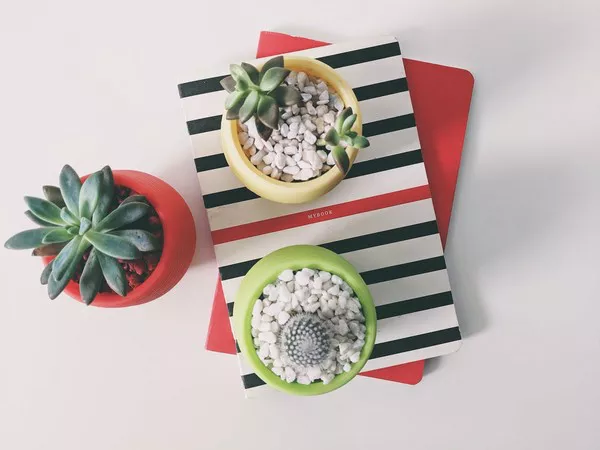Succulents, with their unique charm and resilience, have become a popular choice for both novice and experienced gardeners. To ensure the optimal growth and health of your succulent collection, providing nutrient-rich soil is essential. Succulent compost, tailored to the specific needs of these water-wise plants, serves as an excellent growing medium. In this comprehensive guide, we will explore the step-by-step process of making succulent compost, allowing you to create a nourishing foundation for your succulent garden.
Understanding the Unique Needs of Succulents
Succulents, adapted to arid and semi-arid environments, have distinct water and nutrient requirements. Unlike some other plants, succulents prefer soil that is well-draining and low in organic matter. Traditional compost mixes, rich in organic material, may retain too much moisture for succulents, increasing the risk of root rot. Therefore, crafting a specialized succulent compost involves creating a balanced mix that supports the unique needs of these water-storing plants.
Selecting the Right Ingredients
The key to successful succulent compost lies in selecting the right ingredients that provide the necessary nutrients while maintaining proper drainage. Start with a base of well-draining materials such as perlite, pumice, or coarse sand. These components create air pockets in the soil, preventing waterlogged conditions that can be detrimental to succulents. Additionally, include inorganic materials like crushed granite or grit to enhance the gritty texture, mimicking the natural conditions of succulent habitats.
Incorporating Organic Matter Sparingly
While succulents thrive in soil with minimal organic matter, a small amount can contribute valuable nutrients to the compost mix. Consider adding well-decomposed compost or aged manure in moderation. This organic matter introduces beneficial microorganisms that aid in nutrient availability for succulents. However, it’s crucial to strike a balance, as excessive organic material can compromise the well-draining nature of the compost.
See Also: How often should you feed succulents?
Balancing the Compost Mix
Achieving the right balance in your succulent compost mix is paramount. Aim for a composition that is predominantly inorganic, with a minimal amount of organic matter. A suitable ratio may include 70-80% inorganic materials such as perlite, pumice, or coarse sand, and 20-30% well-decomposed compost or aged manure. This combination ensures that the compost provides essential nutrients without sacrificing the drainage requirements crucial for succulent health.
Creating the Succulent Compost Mix
With the selected ingredients in hand, it’s time to create your succulent compost mix. Use a large container or tarp to combine the inorganic materials and organic matter thoroughly. Ensure an even distribution of components, and consider sifting the mix to eliminate any fine particles that could impede drainage. The goal is to create a well-aerated, nutrient-rich compost mix that supports the specific needs of your succulent plants.
Sterilizing the Succulent Compost (Optional)
While optional, sterilizing your succulent compost can help eliminate potential pathogens, pests, or weed seeds. Sterilization methods include baking the compost in an oven or microwaving it in batches. Keep in mind that this step is not always necessary and may impact the beneficial microorganisms present in the compost. If you choose to sterilize, allow the compost to cool completely before using it for your succulents.
Preparing Succulent Containers
Succulent compost is best utilized in well-draining containers. Choose pots or containers with drainage holes to prevent water from accumulating at the bottom. This is crucial for succulents, as standing water can lead to root rot. Additionally, selecting containers with the right size for your succulents ensures proper root development and prevents overcrowding.
Planting Succulents in the Compost Mix
When planting succulents in your homemade compost mix, follow proper planting techniques to promote healthy growth. Fill the chosen container with the succulent compost, leaving enough space for the roots to spread. Gently remove the succulent from its current pot, shake off excess soil, and place it in the center of the new container. Ensure that the roots are evenly spread out, and cover them with additional compost mix. Water the newly planted succulent sparingly, allowing the compost to settle around the roots.
Watering and Caring for Succulents in Compost
Proper watering practices are crucial for succulents grown in compost. Water your succulents thoroughly but infrequently, allowing the compost to dry out between waterings. This mirrors the natural watering patterns succulents experience in their native habitats. Monitor your plants for signs of overwatering, such as soft or yellowing leaves, and adjust your watering routine accordingly.
Understanding the Unique Needs of Different Succulent Species
Different succulent species have varied water and light requirements. When using succulent compost, it’s essential to consider the specific needs of your succulents. Some species prefer a more porous mix with increased aeration, while others may thrive in a slightly more moisture-retaining mix. Tailor your compost mix and care routine based on the unique characteristics of your succulent collection.
Repotting and Soil Refreshing
Over time, succulents may outgrow their pots, and the compost may become depleted of nutrients. Periodically repotting your succulents in fresh compost allows you to provide them with a nutrient-rich environment and ensures adequate space for root development. When repotting, gently remove the succulent from its current container, shake off excess soil, and replant it in a new pot with fresh succulent compost.
Conclusion
Crafting succulent compost is a rewarding endeavor that empowers you to provide the optimal growing medium for your beloved succulent collection. By understanding the unique needs of succulents and selecting the right balance of inorganic and organic components, you can create a nutrient-rich compost that supports the health, resilience, and beauty of your succulents. As you embark on this journey of compost creation, take joy in the process and relish the vibrant and thriving succulents that will result from your dedicated care and attention to their unique growing needs.


